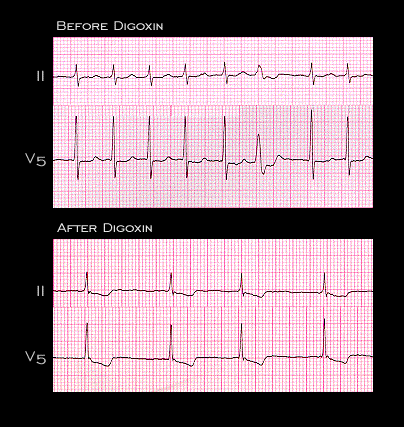
The ECG strips shown here are leads II and V5 from a 72 year old female. They were recorded before (above) and after (below) the administration of digoxin, The rhythm is atrial fibrillation in both. Before digoxin, the ventricular rate is 116/min, there is a single wide complex beat which is probably a ventricular premature beat and the ST segments and T waves are normal. After digoxin, the ventricular rate is 55/min, there is significant ST depression and the T waves are inverted. The slowing of the ventricular rate is a manifestation of the vagally mediated effect which results in slowing of AV conduction and fewer atrial impulses reaching the ventricle. The ST segment and T wave changes reflect the changes in the action potential plateau and phase of rapid repolarization that result from the directly mediated effects on the Na/K pump. These repolarization effects are similar to those induced by a decrease in extracellular potassium and are accentuated by hypopotassemia
